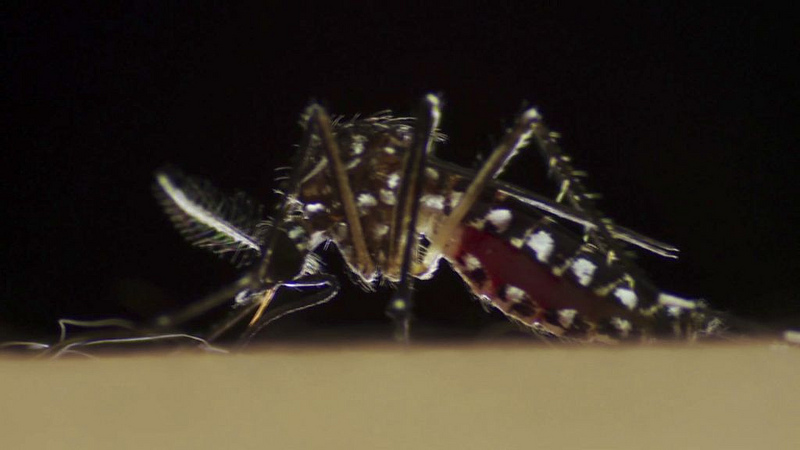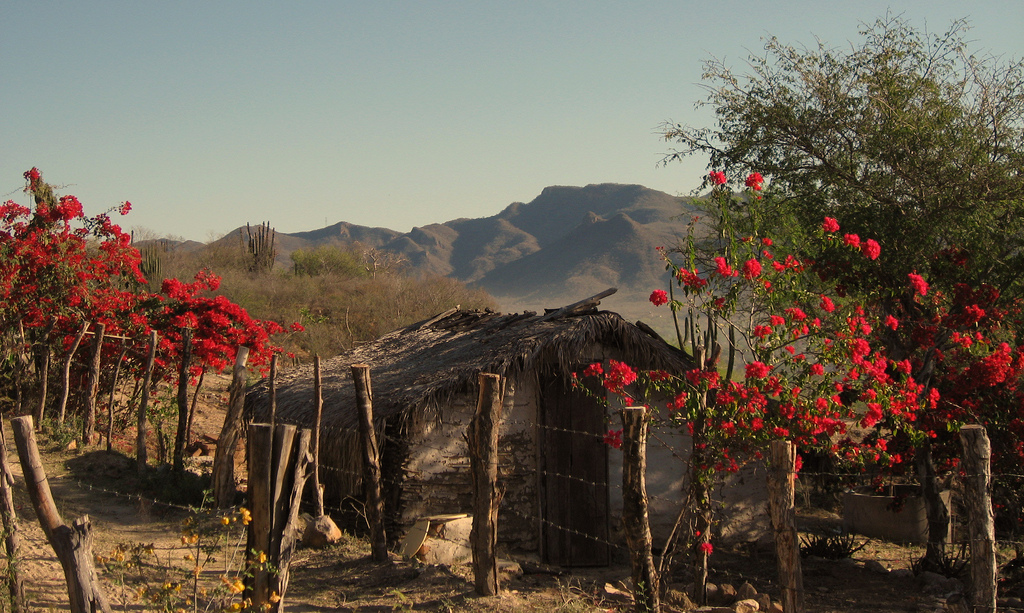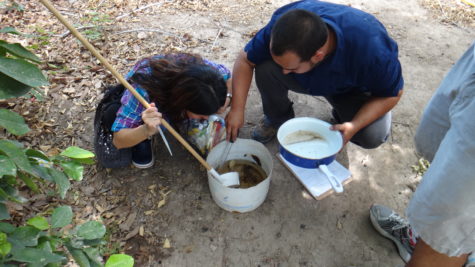 I must tell you up front that Kathleen R. Walker, second author on “Aedes aegypti (Diptera: Culicidae) Longevity and Differential Emergence of Dengue Fever in Two Cities in Sonora, Mexico,” published recently in the Journal of Medical Entomology, is my stepdaughter. She’s an entomologist, she studies bugs; I occasionally have a bug question. I asked her once about those little tornadoes of gnats you see in the springtime, and she said – as I remember, so don’t hold her accountable – that they were columns of bugs in love and the bugs at the top were the ones having sex the most. I asked her another time about the translucent aphids she showed me that were being eaten from the inside out by tiny parasitic wasps, and she said, fondly, “The aphids don’t seem to mind. They’re awfully stupid.”
I must tell you up front that Kathleen R. Walker, second author on “Aedes aegypti (Diptera: Culicidae) Longevity and Differential Emergence of Dengue Fever in Two Cities in Sonora, Mexico,” published recently in the Journal of Medical Entomology, is my stepdaughter. She’s an entomologist, she studies bugs; I occasionally have a bug question. I asked her once about those little tornadoes of gnats you see in the springtime, and she said – as I remember, so don’t hold her accountable – that they were columns of bugs in love and the bugs at the top were the ones having sex the most. I asked her another time about the translucent aphids she showed me that were being eaten from the inside out by tiny parasitic wasps, and she said, fondly, “The aphids don’t seem to mind. They’re awfully stupid.”
For a number of years now, she’s been working on mosquitoes and for good reason: the ones taking over these days, Aedes aegypti, carry not only yellow fever, but also Zika, chikungunya, and the disease Kathleen R. studies, dengue.
Dengue is a virus that causes high fevers and when it’s severe, the kind of hemorrhagic fever that kills people. 100 million people get it every year; since the 1950’s the incidence has gone up by a factor of 30; and it’s spreading. Since it’s carried by mosquitoes, the places with the most dengue ought to be the places with the most mosquitoes. But in fact, some places that have the mosquito don’t have dengue.
 So Kathleen got interested in the difference between these places and the result is the journal paper, above. Kathleen has always been a good writer; I don’t know whether she wrote or even edited this paper, but it’s suspiciously readable. Aedes aegypti, says the paper, is “highly anthropophilic,” it “readily enters houses, feeds primarily on human blood, and oviposits in human-made water containers.” Kathleen lives in the U.S. near Mexico and two towns over the border in Sonora — Nogales in the north and Hermosillo in the south — have the same numbers of mosquitoes. But Nogales doesn’t get dengue and Hermosillo does.
So Kathleen got interested in the difference between these places and the result is the journal paper, above. Kathleen has always been a good writer; I don’t know whether she wrote or even edited this paper, but it’s suspiciously readable. Aedes aegypti, says the paper, is “highly anthropophilic,” it “readily enters houses, feeds primarily on human blood, and oviposits in human-made water containers.” Kathleen lives in the U.S. near Mexico and two towns over the border in Sonora — Nogales in the north and Hermosillo in the south — have the same numbers of mosquitoes. But Nogales doesn’t get dengue and Hermosillo does.
To find out why, out she goes to collect the little bastards. I can see her walking into the towns in her long cottons and with her smiley, sharp, open face of someone you’d like to talk to, with her hair up and sweaty little curls at her hairline; walking in the dust and heat from house to house, talking to everybody, getting to know them and their kids; looking around for containers that might have larvae, asking if she could set mosquito traps nearby, if she could collect mosquitoes from the traps and larvae from the containers, explaining her reasons simply and in great detail and in Spanish and as many times as necessary; hunkering down over the traps in her naturalist’s crouch, precisely collecting larvae and mosquitos, then taking them back to the lab, and identifying, sexing, freezing, dissecting the mosquitoes and preserving and identifying the larvae. I don’t know that she did all this, I’m saying only that I can see her doing it. It’s the kind of things she would do.
Then she and her colleagues did some math, analyzed a genetic marker for age, probably had many discussions, and in the end, found that the difference between those towns, all other things being equal, was that the mosquitoes in Hermosillo were older.
So now the logic becomes simple: the mosquito (a female always, I don’t know why) feeds on someone with dengue and in the process picks up the virus. The virus reproduces in the mosquito’s salivary gland until it’s numerous enough that the mosquito’s next bite will be infectious – taking up to 12 days. More of the mosquitoes around Hermosillo were infectious; they were more than 14 days old.
And why, says the paper, “are the mosquitoes living longer in Hermosillo?” Aedes aegypti are tropical; they follow heat. Nogales’ temperatures were below 20 degrees C; Hermosillo’s didn’t go below 25 C. In Nogales, the old females died of the cold before they had time to pass on dengue. In Hermosillo, they stayed warm, lively, and occasionally homicidal.
And what might that mean for those of us who are not Erik Vance and who live north of Mexico, in this world in which heat is creeping farther and farther north, and the Aedes aegypti range has been creeping north along with it and so have the mosquito-borne diseases, and all the old ladies will live long enough to make people sick? That particular bug question, I didn’t ask. I don’t write about global climate change, it’s too depressing. And anyway I can figure out the answer by myself.
____
 UPDATE: The mosquitoes and larvae are not collected by only Kathleen; she has trained a little army of collaborators — in Hermosillo, mostly college students; and in Nogales, the staff (and their friends and relations) of the Hospital General in Nogales. Here’s a picture of two of them in, again, the naturalist’s crouch.
UPDATE: The mosquitoes and larvae are not collected by only Kathleen; she has trained a little army of collaborators — in Hermosillo, mostly college students; and in Nogales, the staff (and their friends and relations) of the Hospital General in Nogales. Here’s a picture of two of them in, again, the naturalist’s crouch.
_______
[I know Aedes aegypti is supposed to be italicized but I don’t like the look of text with a lot of italics in it; it looks more like information and less like a story.]
Photos: Aedes aegypti by Sanofi Pasteur; Sonora by eflon, both via Flickr
Interesting how small factors matter, thanks for the article.
It is the females that suck our blood because they need the extra protein to make eggs.